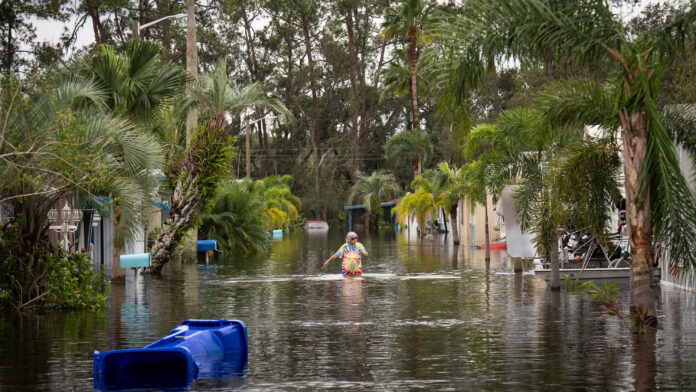Natural disasters such as hurricanes Helene and Milton underscore the critical need for comprehensive medical preparedness in the face of large-scale emergencies. These storms not only tested the resilience of emergency response systems but also provided valuable lessons for improving readiness in the medical community. Below, we’ll explore key insights gained from these events to help guide future disaster preparedness efforts.
1. Pre-Event Planning and Coordination
One of the most significant lessons from Hurricanes Helene and Milton is the importance of pre-event planning and interagency coordination. Medical facilities, emergency responders, and public health agencies must work together to create actionable response plans well in advance of any disaster.
- Proactive Risk Assessments: Both hurricanes highlighted the need for regular assessments of medical infrastructure, particularly in high-risk coastal areas. Vulnerable hospitals, clinics, and nursing homes should have evacuation and backup plans tailored to potential storm scenarios.
- Interagency Communication: Effective communication between local, state, and federal agencies proved crucial. In the aftermath of Milton, for example, poor coordination led to delayed medical supply deliveries, exposing gaps in interagency protocols. These delays emphasize the need for pre-established communication channels and unified command systems.
2. Ensuring Continuity of Care
Hurricanes often disrupt medical services, leaving vulnerable populations without access to critical care. Lessons from Helene and Milton highlight strategies for maintaining continuity of care during and after disasters.
- Telemedicine Integration: As traditional healthcare facilities became inaccessible, telemedicine emerged as a lifeline for many patients. Systems that were already equipped with telehealth options managed better continuity of care for chronic conditions.
- Emergency Dialysis and Oxygen Supplies: Both hurricanes revealed the vulnerability of patients dependent on dialysis and oxygen therapy. Improved pre-registration systems for these patients could ensure they receive priority evacuation and alternative care arrangements.
- Pharmaceutical Access: During Helene, many evacuees reported running out of prescription medications. Encouraging residents to maintain a two-week emergency supply of essential medications could mitigate this risk.
3. Medical Supply Chain Resilience
Supply chain vulnerabilities became evident during both hurricanes. From hospital equipment to basic first aid supplies, delays in delivery severely impacted care.
- Stockpiling and Distribution: Local stockpiles of essential medical supplies, including bandages, antibiotics, and intravenous fluids, proved insufficient. Regions prone to hurricanes should invest in decentralized, storm-resistant warehouses for better supply distribution.
- Flexible Logistics: In Milton, flooded roads hampered supply trucks, delaying critical deliveries. Helicopter or drone-based delivery systems could serve as alternatives when ground transportation is not feasible.
4. Protecting Medical Personnel
Healthcare workers often bear the brunt of disasters, working long hours under extreme stress. Lessons from both hurricanes revealed the need for measures to protect and support medical personnel.
- Staff Safety Protocols: During Helene, several hospitals lacked adequate shelter and resources for their staff. Designating safe zones within medical facilities can ensure healthcare workers remain protected while serving patients.
- Mental Health Support: The psychological toll on first responders was significant. Implementing mental health support programs, including counseling and peer support, can help alleviate burnout and post-traumatic stress.
5. Evacuation Challenges and Solutions
Evacuating hospitals and nursing homes is one of the most logistically challenging aspects of disaster response. Helene and Milton brought to light several areas for improvement.
- Pre-Identified Shelters: Many shelters were overwhelmed by the number of evacuees, particularly those with medical needs. Designating shelters specifically for patients requiring specialized care could prevent overcrowding and ensure better outcomes.
- Transportation Resources: A lack of medical transport vehicles delayed evacuations during Milton. Partnerships with private ambulance services, public transportation, and volunteer networks can expand evacuation capabilities.
- Medical Records Portability: Evacuated patients often arrived without complete medical histories. Cloud-based electronic health records (EHR) systems can ensure healthcare providers have access to accurate information regardless of location.
6. Public Education and Engagement
Both hurricanes demonstrated the critical role of public education in medical preparedness. Informed residents are more likely to take proactive steps to protect their health.
- Emergency Preparedness Kits: Many residents were unprepared with basic medical supplies such as first aid kits, over-the-counter medications, and personal hygiene items. Public health campaigns can emphasize the importance of assembling and maintaining these kits.
- Special Needs Registries: Local governments that maintained registries for individuals with special medical needs were better able to provide targeted assistance. Encouraging broader participation in such programs could save lives.
- Community Training: First aid and CPR training for the general public can empower residents to provide basic care until professional help arrives.
7. Post-Event Recovery and Analysis
The aftermath of hurricanes is a critical period for evaluating what worked and what didn’t in the medical response.
- Data Collection: Both hurricanes revealed inconsistencies in data collection regarding patient outcomes and resource utilization. Standardizing post-event data analysis can provide a clearer picture of strengths and weaknesses.
- Adaptive Planning: Recovery plans must address not only immediate medical needs but also long-term health issues stemming from the disaster, such as respiratory problems caused by mold exposure or mental health challenges.
8. Leveraging Technology for Resilience
Advancements in technology offer new opportunities to enhance medical preparedness.
- Early Warning Systems: Accurate and timely weather forecasts allowed hospitals to initiate emergency plans during Helene and Milton. Integrating these warnings into medical response workflows ensures more effective mobilization.
- Geospatial Mapping: Real-time mapping tools can identify flooded areas and guide resource allocation. These tools were instrumental in targeting rescue efforts during Milton.
- Mobile Apps for Health Alerts: Apps that notify residents about nearby open pharmacies, shelters, or emergency services can streamline access to care.
Conclusion
Hurricanes Helene and Milton taught invaluable lessons about medical preparedness, highlighting areas of strength and exposing critical vulnerabilities. By prioritizing pre-event planning, ensuring continuity of care, and leveraging technology, communities can better withstand the medical challenges posed by future disasters. Proactive investment in these strategies will save lives and build a more resilient healthcare system capable of weathering any storm.


